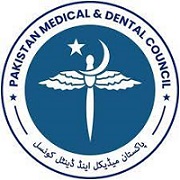BREECH PRESENTATION: AN OVERVIEW OF PATIENTS VISITING SOUTHERAN PUNJAB
Abstract
Objective: This study was conducted to determine incidence of breech presentation, etiology, mode of delivery and fetal outcome.
Methodology: Retrospective cohort study was conducted in Sheikh Zayed Medical hospital, Rahim Yar Khan from period of January 2013 to December 2015. 685 patients with breech presentation in Southern Punjab were included in our study. Demographic data like age, parity, gestational age and previous mode of delivery was determined. Type of breech presentation was checked by ultrasonography. Etiology was determined for breech presentation. Mode of delivery in present pregnancy was determined in the form of vaginal delivery and cesarean section. Fetal outcome was compared in both groups.
Results: Incidence of extended breech was higher 98.9%, where flexed breech was in 6.5% and footling breech was in 3.5% of cases. Most of cases with breech presentation was in primigravida (303) 44.2%, 277 (40%) were multi and grand multiparous, 8.6% with preterm breech, 28 women(4%) breech presentation was found in first twin, fetal anomalies were in 1.45%, uterine anomalies in cases and placenta previa in 03 patients. 173 (25.2%) were delivered by vaginal breech delivery and 512 (74.7%) were delivered by lower segment cesarean section. Perinatal morbidity and mortality was lower in cesarean section group as compared to vaginal delivery group. But statistically there was no significant difference.
Conclusion: Proper selection of patient for mode of delivery will be helpful in improving fetomaternal outcome. Regular drills in maternity units will enhance expertise and in the presence of skilled personals vaginal breech delivery will be safe mode of delivery.






